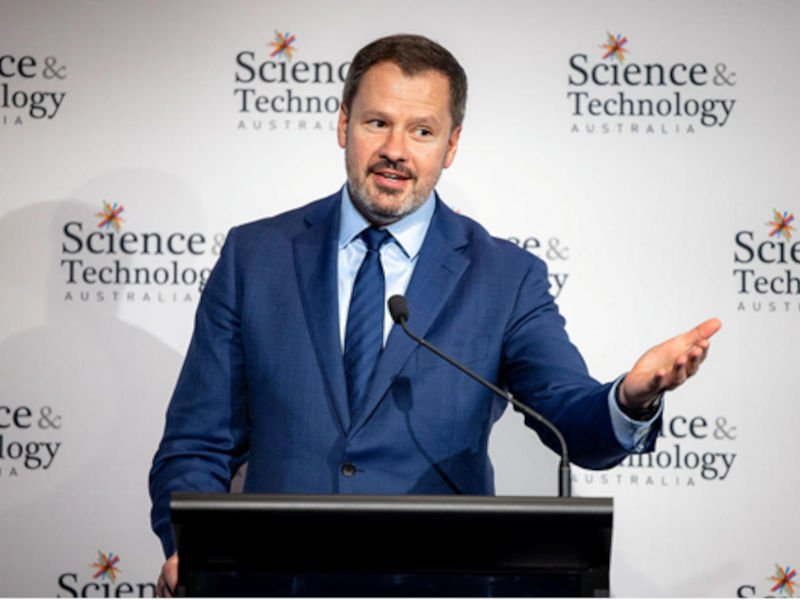Federal Labor’s first Budget since returning to government was an odd one for the Industry and Science portfolio, more remarkable for what was left out rather than for new measures announced on the night.
In many ways the portfolio took a haircut, as savings were found by clawing back uncommitted funding from some signature programs of the previous government, most notably the Modern Manufacturing Initiative.
But in a wide-ranging interview with InnovationAus.com, the Minister for Industry and Science Ed Husic said the Budget – including the measures taken in his own portfolio – delivered a balance between meeting core inflationary challenges, delivering on election commitments, and setting frameworks to support what comes next.
The $506 million in portfolio savings was a “down payment” on bringing to life the ambitious $15 billion National Reconstruction Fund.

Funding of more than $45 million announced in Tuesday’s Budget between Industry and Finance sets the wheels in motion, underwriting establishment costs of the NRF. Mr Husic says the ambition remains to have the fund operational in the new financial year.
Just as significantly, Mr Husic says the planning for the Future Made in Australia Office – which will co-ordinate commitments made through Labor’s Buy Australia Plan – was well under way, including the shape of the planned procurement reforms.
In the coming weeks, the government will release more detail about the Future Made in Australia Office and will open a consultation process around the Buy Australian Plan.
“The big thing that I would want to emphasise with the Budget is that the full ambition and agenda of this government will not be laid out in its first Budget,” Mr Husic told InnovationAus.com.
“There is a lot of work that needs to be done – and which we are doing – working furiously on things like bringing together the National Reconstruction Fund. Something of that scale and across the number of industry sectors that we are looking to work with – that does take time and effort.
“The Budget itself was designed to ensure that in the economic environment that we’re in, where the big challenge that industry faces is inflation, we can’t let that take hold,” he said.
Asked whether the inflationary pressure might cause government to hit ‘pause’ on when NRF investments would begin to flow, Mr Husic is unequivocal.
“No, because we see that building industry capability is important in the longer term. Investing in manufacturing capability is going to take some work. So, we have just got to get started,” he said.
When it comes to the NRF, “you can reasonably expect to see more in the next Budget [in May].” In the meantime, work is being done to select a chair and a board for the fund, which is being modelled on the co-investment framework of the Clean Energy Finance Corporation.
“We need to set things up around the consultation. We want to engage people publicly on that,” Mr Husic said.
“It’s a co-investment fund so we need to find ways to bring people in to join with us in terms of our investment – superannuation, VC, [private equity] etc – in the sort of work that we want to in the National Reconstruction Fund. So, we want to get that consultation right.
“We have to select a board and a chair and to get the investment mandate shaped up. So, there is a lot of work to get done between now and the next Budget. We want to get that done as soon as possible.”
The intention remains to have the fund set up and operations by next July, with an independent board to a clear investment mandate to guide decisions.
That mandate will map to seven priority areas identified by government: value-add in resources; value-add in agriculture, forestry and fisheries; transport; medical science; renewables and low emission technologies; defence capability; and enabling capabilities.
Mr Husic said the various sub-funds of the NRF that were announced during the election campaign also offer a guide. That includes up to $3 billion for the Powering Australia Plan; $1.5 billion for medical manufacturing; $1 billion for value-adding in the resources; $1 billion for critical technologies; $1 billion for advanced manufacturing; and $500 million for value-adding across agriculture, forestry, fisheries, food and fibre.
“There are things like that which will help to signal to the board the things that we’re interested in,” Mr Husic said. “And initiatives like the National Quantum Strategy and the Robotics Strategy – that is work that is designed to also inform the thinking of the board – so that we can get decisions moving practically, as soon as possible.”
While the half of billion was redirected or cut from signature Coalition grants programs as the “down payment” on the NRF, Labor is not signalling a philosophical shift from grants to the loans, guarantees and equity being overseen by the NRF.
Mr Husic said there’s going to be a balance, but right now the department is reviewing the various programs to see how they line up with the NRF.
Do you know more? Contact James Riley via Email.

